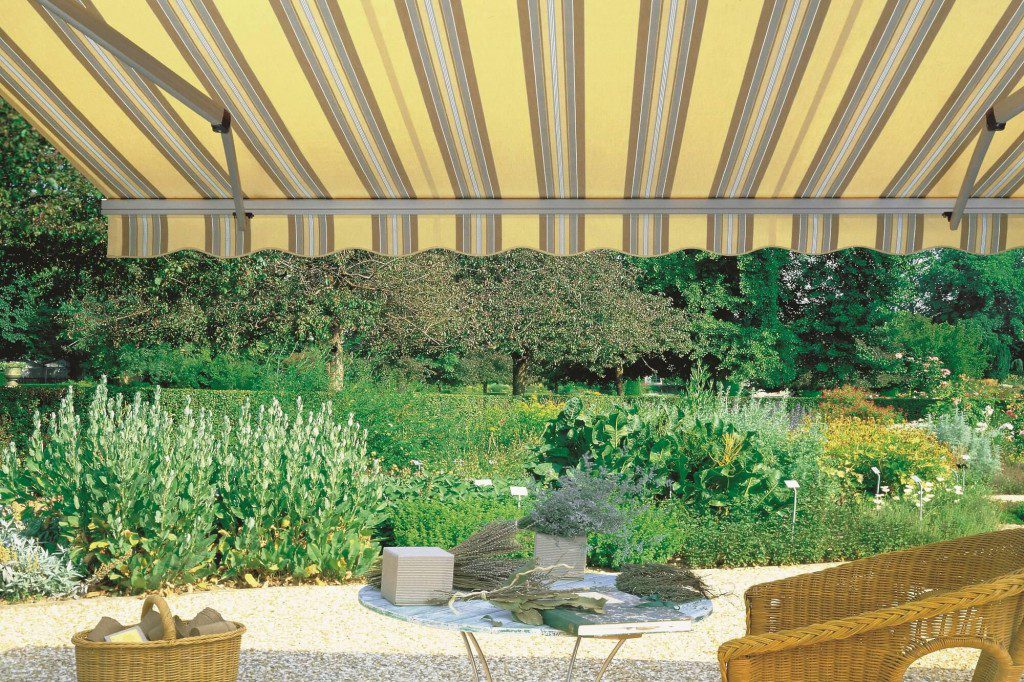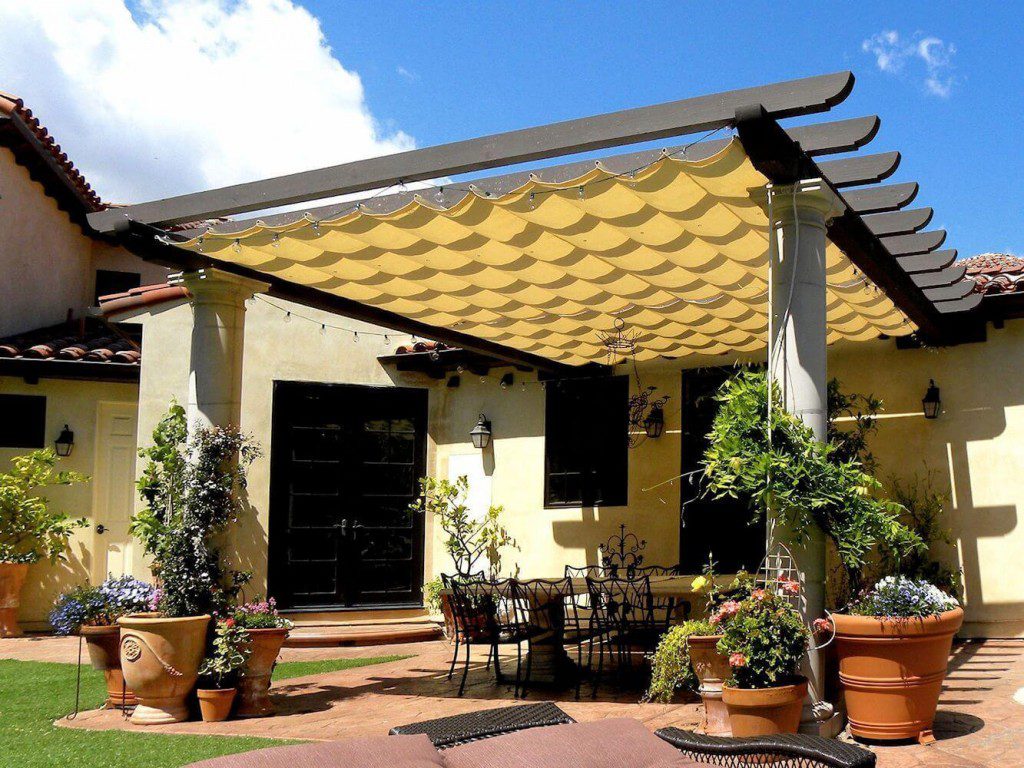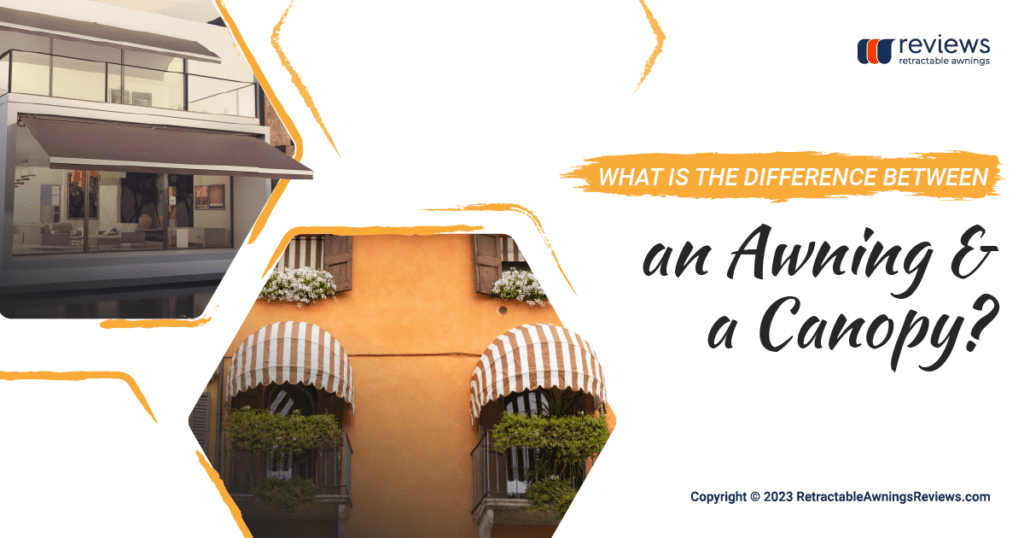The terms “awning” and “canopy” are often considered to have the same meaning. These are two different products that differ in their features and specifications. If you are among the people who do not know that there is a difference between these two products, then continue reading to find out more about them.
First of all, I want to share that the investment in an awning or a canopy is an excellent choice because these two products add value to your outdoor living space, whether you are a home or business owner.
They provide shade, protecting you, your family, or customers from harmful UV rays. At the same time, they create more comfort and extend your outdoor space where you can enjoy the shade when you want and sun when you want.
Scope and Size
The awning and the canopy differ in their scope and size. You can have a fully extended folding lateral arm retractable awning that is about 16 feet. It means that if the area you want to cover is vast, then this is not the best choice for you. On the other hand, the retractable canopy can only be extended up to about 7 feet. For an extension or projection greater than 16 feet consider a retractable pergola or retractable/rotating louvered roof pergola. That makes this product type perfect for an extra-large patio or deck, and more suitable for many businesses, such as restaurants, cafes, and others. There are often businesses that can use canopies, awnings or pergolas to display their products during specific events.
Installation
Canopies are made from fabric or vinyl. These fabrics are stretched over a frame most commonly in the shape of a half circle. This type of product gives a little more options in terms of installation. First of all, they are available fixed and retractable, and if retractable is installed, you can use them for privacy as well as to ensure maximum comfort from the heat, glare and damaging UV rays by covering a window for example.
Awnings are attached to a rigid frame. They are installed above a window or door, or overhanging a patio, porch, deck, or walkway. One of the best types I I recommend you choose is a folding lateral arm retractable awning.
They can be retracted and extended. But no matter what type of awning you choose, they are all permanently attached to a specific surface.

Design
Awnings and canopies also differ in their design. Both products are available in various designs customized to your requirements. That is crucial, especially for businesses.
Both canopies and awnings are mounted to a specific surface. Thus, they remain permanently installed. . Both canopies and awnings can be retractable, which is more than excellent as retractable offers many advantages of fixed/permanent.
Color & Style
As for the colors and style of awnings and canopies, your choice is vast. You can find the perfect color and style that will fully complement your exterior without compromising.
Thanks to the wide variety, you can bring more style and elegance to your outdoor space,and it adds a lot more value, whether it is for your home or business.
Quality of Materials
The quality of the materials is essential, and both types of products can be of extremely high or very low quality. It all depends on the manufacturer you choose. In this regard, I advise you to avoid all products made in China. Although their price is much more affordable, the quality is low. Choose an awning or a canopy that is made in Europe. These products are best-in-class and are much more durable. In addition, if the chosen awning or canopy has an extensive warranty, like 20-25 years for example, this is another sign of high quality.
Durability
Both products can be durable enough, depending on the materials and fabric from which they are made. That is why it is essential to pay special attention to the materials and their quality to ensure that you get a durable awning or canopy.

Storage
As we shared,both awnings and canopies are installed in a specific place, not allowing them to be moved. They stay in the place where they are installed until they wear out, or until, for some reason, you no longer want to have an awning. The good news is that if you buy and install retractable versions of both awnings and canopies you can close them for storage purposes in the winter when they are not being used.
Customization
The company you choose must customize the canopy or the awning. In most cases, standard sizes of the product are not suitable for every location, therefore it is essential to offer you customization of your chosen product so that it fits perfectly into your outdoor space.
Opportunities
Both awnings and canopies offer excellent opportunities, as they are suitable for residential, commercial, industrial, and institutional use. Often among the clients for retractable awnings, retractable pergolas and retractable/rotating louver roof pergolas are exterior and interior designers, architects, landscape architects, cafes, restaurants, hotels, and of course the public at large.
This, in turn, means that both awnings and canopies are widely used. In addition, these products provide more comfort, add more value, and improve your outdoor space.
Thanks to them, you can have lunch or dinner with your family and friends in your yard, as well as offer your customers the opportunity to enjoy the shade or sunny weather while drinking coffee or tea, for example.
Protection
Retractable canopies are used to shelter small depth backyard patios, porches, and carports. In addition, this product blocks UV rays, sun, and covers your food while cooking or eating. Retractable awnings also protect against harmful sun rays, reducing temperatures and providing fantastic shade.
Both retractable awnings and retractable canopies offer light rainand light wind protection, but not snow protection, so it depends on l which product type is chosen. It is therefore essential to indicate the amount of rain and wind t the awning or canopy must withstand when partially or fully extended.

Aesthetics
Whether you choose a canopy or an awning, both products add more value to the exterior. Suppose you want to buy such a product for your business. In that case, it can attract more customers because it creates additional comfort and aesthetically makes every restaurant, hotel, or other business more attractive.
On the other hand, canopies and awnings beautify the outdoor space in your home. If you are considering selling your house, it will improve its exterior and allow you to sell it much faster and at a much higher price. And even if you do not want to sell your house, the awning or the canopy will make your home a cozier place where you can enjoy the good weather with your friends and family.
Benefits
Each of these products has many advantages, as they are suitable for the different needs of each client. Both products are for residential and commercial use. In addition, you can choose from a variety of designs, styles, colors, fabrics, and sizes.
As we shared above, canopies:
- Provide less shade.
- They can be retractable —which allows you to close them when not in use thus allowing the fabric to last longer and allowing heat into the house or building to lower your electric bill.
- You can store them whenever you want—for example, if you do not wish to use them in the winter, the product can be easily stored simply by closing it.
On the other hand, awnings:
- Can be retractable—that means you can extend and retract the product whenever you want.
- They are suitable for patios, decks, doors and windows.
- Protect furniture, curtains, and carpets from damaging UV rays—so you keep their original colors for much longer.
- Reduce temperatures inside the building.
- Reduce electricity bills by keeping the house cooler in the spring/summer and warmer in the winter
